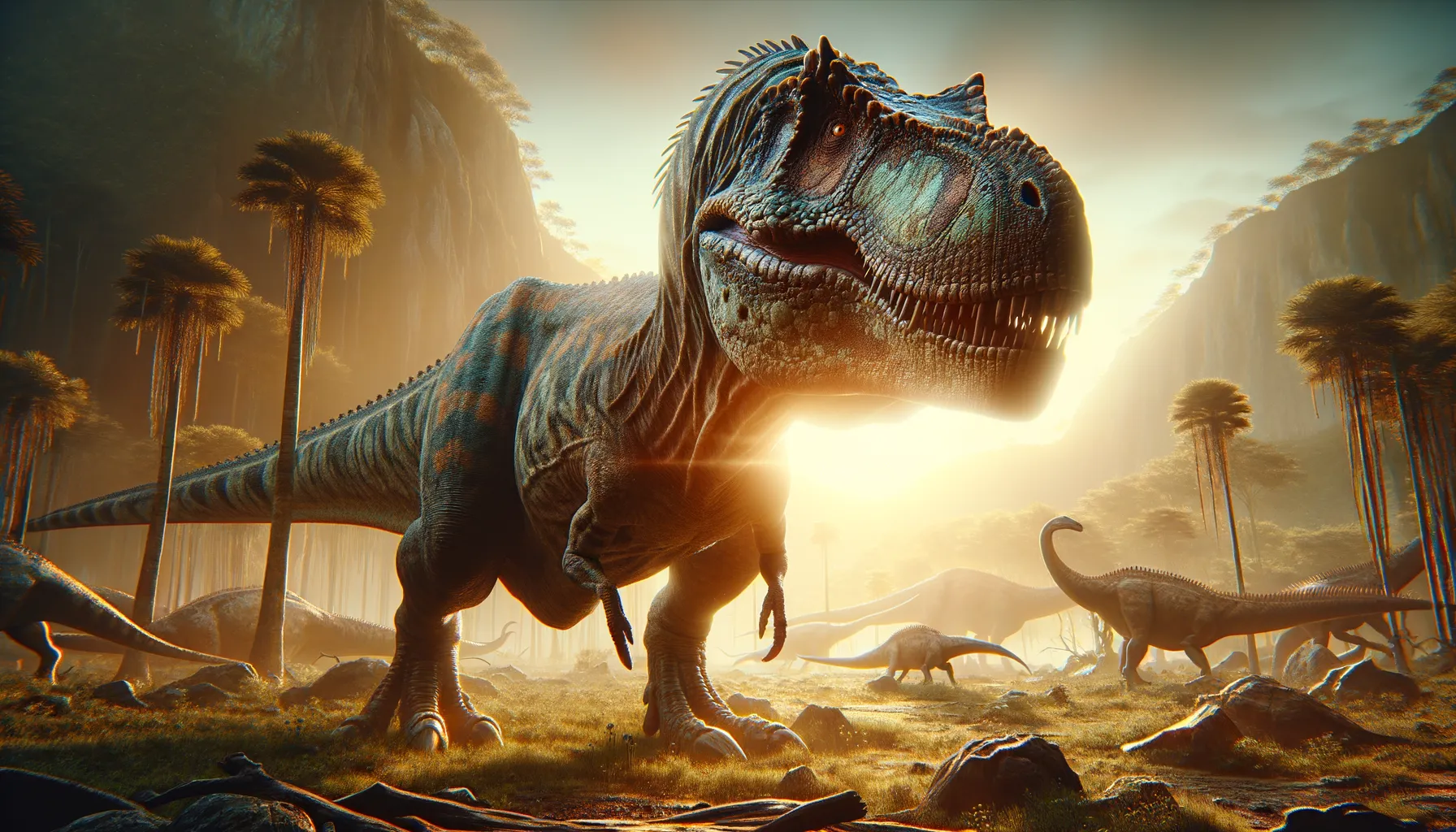
Tyrannotitan
A colossal predator of the ancient world.
Period
Cretaceous
Length
Up to 11 meters long.
Height
Around 4 meters at the hips.
Weight
Approximately 5 to 7 tons.
Tyrannotitan was a massive carnivorous dinosaur that roamed the lands of South America during the late Cretaceous period. With formidable size and strength, it could rival the likes of other giant theropods. Paleontologists have unearthed critical fossils that provide insight into its massive build and lifestyle. Its discovery has added valuable information to the understanding of large predatory dinosaurs' evolution and ecological roles.
Diet
Tyrannotitan was a carnivore that preyed on large herbivorous dinosaurs. Its diet likely included sauropods and hadrosaurs, which provided sufficient nutrition.
Hunting
It utilized its sharp teeth and powerful jaws to hunt and take down its prey. Ambush and strength were likely its primary hunting tactics, overpowering prey with sheer size.
Environmental challenges
As a large predator, Tyrannotitan faced challenges such as competition with other large theropods for territory and food. Environmental changes, like fluctuations in climate, could affect prey availability. The dense forests and diverse landscapes of its habitat required adaptations for effective movement and hunting strategies. Additionally, it needed to navigate complex ecosystems filled with other dinosaurs and concurrent fauna.
Speed
Moderate, comparable to other large theropods.
Lifespan
Estimated to be around 30-40 years.
First discovery
Discovered in Argentina in 2005.
Fun Facts
- Tyrannotitan lived approximately 112 million years ago during the early Cretaceous period.
- This dinosaur was one of the giant theropods, meaning it was a large, bipedal carnivore.
- Tyrannotitan's name means 'tyrant titan', highlighting its impressive size and strength.
- Fossils of Tyrannotitan have been found in present-day Argentina, suggesting it roamed South America.
- It is believed Tyrannotitan was around 40 feet long, making it nearly as large as a school bus.
- Despite its intimidating size, Tyrannotitan had small, yet sharp teeth compared to some of its relatives like Tyrannosaurus rex.
- The discovery of Tyrannotitan has helped scientists learn more about the evolution and diversity of giant carnivorous dinosaurs.
Growth and Development
Tyrannotitan experienced significant growth spurts during its juvenile years. Similar to other large theropods, its development included changes in bone structure to support its massive body. As it matured, its skull and teeth enlarged to accommodate its predatory lifestyle. Studies suggest a prolonged growth period, indicating a long lifespan with continued physical development over decades.
Habitat
Tyrannotitan inhabited forested regions and open plains that provided ample cover for ambushing prey. Its environment was rich in flora, supporting a wide range of prey species for its carnivorous diet. The presence of rivers and water sources was critical, offering opportunities to encounter and hunt for herbivorous dinosaurs. This varied and lush landscape was ideal for both hunting and living.
Interaction with other species
Tyrannotitan likely competed with other large predators for food and space. Occasional violent encounters with rivals might have occurred, determining territorial dominance. Besides predator competition, it lived alongside diverse species, including herbivores, contributing to the complex ecosystem dynamics. Symbiotic relationships or competitive interactions with smaller opportunistic carnivores might have been commonplace.
Natural lifespan
Tyrannotitan's lifespan could naturally extend to several decades in the wild.
Reproduction
Reproductive strategies likely included laying eggs in secluded nests, ensured by environmental protection. Juveniles required substantial parental protection during early life stages to survive predators. It likely followed a reproductive pattern similar to other large theropods, investing significant resources in each successive generation. Nesting sites might have been selected for safety and proximity to resources.
Social behaviour
Tyrannotitan might have been solitary or engaged in limited social interactions. It could exhibit territorial behavior, marking areas to defend resources against competitors. Some evidence suggests opportunistic social behavior during primary activities like feeding. Social structure details remain speculative but reflect patterns observed in related giant theropods.
Fossil locations
Fossils of Tyrannotitan have primarily been discovered in Argentina, contributing to significant insights. These fossils include partial skeletons which aid in reconstructing its physical attributes. Sites in Patagonia have revealed key specimens revealing details of its anatomy. The geographical concentration helps researchers understand its range and ecological niche during the Cretaceous.
